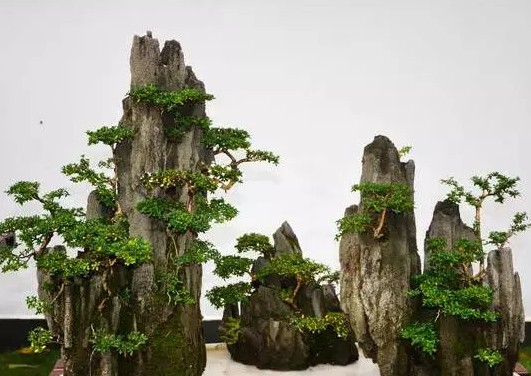Sichuan style bonsai art style
Sichuan bonsai, also known as Jiannan bonsai, is an excellent traditional art of the Han nationality and a treasure of garden art. It is a bonsai art school named after Sichuan Province, and it is also one of the five major schools of bonsai in China. Among them, it is divided into two local styles of western Sichuan and eastern Sichuan, which is famous for its simplicity and preciseness and Qiu qu. West Sichuan with Chengdu as the center includes Wenjiang, Pixian, Guanxian, Chongqing, Xindu, Shifang and other counties. Eastern Sichuan takes Chongqing as the center, including the counties around Chongqing.

Sichuan style bonsai art style:
The stump is characterized by simplicity and rigour, Qiu qu and colorful, while the landscape bonsai wins with majestic momentum. It is high, overhanging, steep and deep, reflecting the typical style of Bashan Shushui. The bonsai artists in the middle of Sichuan are dedicated to enlightenment and careful observation, so they have formed the unique modeling rhythm of Sichuan-style bonsai, which also makes the bonsai production skills of Sichuan-style become a national intangible cultural heritage.
Bonsai, a comprehensive art created by our ancestors to worship nature, combines Chinese philosophy, calligraphy and painting, places the ideal of Chinese people indulging in landscapes, and embodies the purport of Chinese literati. Wang Wei, du Fu, Su Shi, Wang Shipeng and Lu you all wrote poems about bonsai and participated in the production of bonsai, which greatly increased the cultural connotation of bonsai.
Chengdu has a deep relationship with the development of bonsai in China: Liu Chan, the post-Shu master of the three Kingdoms, and Li Xian, the crown prince of Zhang Huai in the Tang Dynasty, all made bonsai in Chengdu, driving the production skills and artistic level of bonsai in Chengdu. The bonsai of Sichuan School, one of the five major schools in China, is deeply rooted in the magnificent and beautiful Bashan Shu River. it is the crystallization of the wisdom of the hardworking Bashu people and an important part of Ba-Shu culture.
Time: 2019-06-04 Click:
- Prev

Yangpai bonsai museum bonsai garden
Yangpai Bonsai Museum is located in the thin West Lake Scenic area, which integrates collection, display, popularization, research and other functions, covering an area of more than 40 mu. Yangpai bonsai is one of the five major schools in China, and its production skills of one inch (one inch is 82.5px) and three bends are unique in the world.
- Next

Sichuan style bonsai is rooted in Bashan Shushui.
Sichuan bonsai is one of the five major schools of traditional Chinese bonsai, which is deeply rooted in the magnificent and beautiful Bashan Shushui. Bonsai production skills represented by Chengdu area are the foundation and core of Sichuan bonsai production skills. Sichuan style bonsai has a long history, profound cultural heritage, exquisite craftsmanship and strong local characteristics.
Related
- Fuxing push coffee new agricultural production and marketing class: lack of small-scale processing plants
- Jujube rice field leisure farm deep ploughing Yilan for five years to create a space for organic food and play
- Nongyu Farm-A trial of organic papaya for brave women with advanced technology
- Four points for attention in the prevention and control of diseases and insect pests of edible fungi
- How to add nutrient solution to Edible Fungi
- Is there any good way to control edible fungus mites?
- Open Inoculation Technology of Edible Fungi
- Is there any clever way to use fertilizer for edible fungus in winter?
- What agents are used to kill the pathogens of edible fungi in the mushroom shed?
- Rapid drying of Edible Fungi

